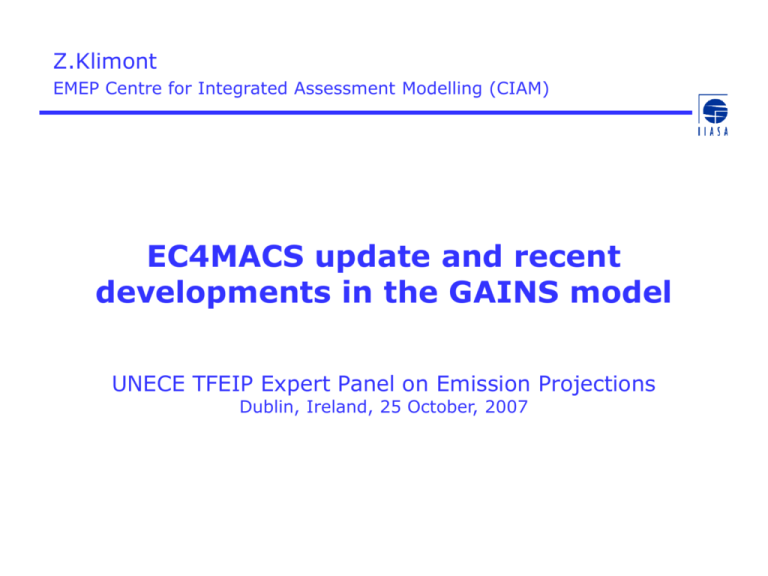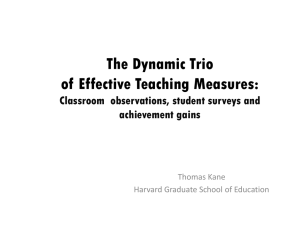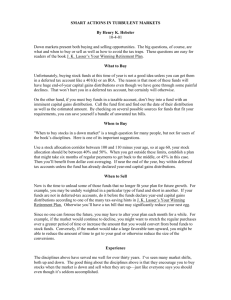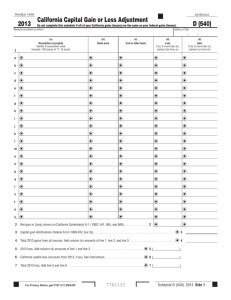EC4MACS update and recent developments in the GAINS
advertisement

Z.Klimont EMEP Centre for Integrated Assessment Modelling (CIAM) EC4MACS update and recent developments in the GAINS model UNECE TFEIP Expert Panel on Emission Projections Dublin, Ireland, 25 October, 2007 Outline • What is EC4MACS • Recent updates of GAINS within the EC4MACS The EU-LIFE project EC4MACS: European Consortium for Modelling of Air Pollution and Climate Strategies • EU funding for a consortium of integrated assessment modelling teams to prepare and maintain modelling tools for air quality and climate policy development – – – – – – – – IIASA (CIAM) - Coordinator MNP/RIVM (CCE) - critical loads data NTUA Athens – energy projections Uni Bonn et al. – agricultural projections LTUA Thessaloniki – transport modelling AEAT et al. – benefit assessment MET.NO (MSC-W) – dispersion modelling Supported by additional contracts for JRC Ispra and Sevilla • Project time frame 2007-2012 • ~4.5 million € EU contribution (on co-funding basis) Interface PRIMES-GAINS • Expert system has been developed to transfer data from PRIMES to GAINS • The rules have been discussed and agreed between the teams • The interface allows for consistent transfer of data from PRIMES to GAINS • The system uses additional sets of rules to complete the GAINS database (where PRIMES data is missing or not available) based on existing GAINS data assuring overall consistency with PRIMES. GAINS impact module developments • The mapping capabilities of the model have been updated and extended to include: – Exceedance maps for euthrophication and acidification – YOLLs (Years Of Life Lost) maps – Acidification will be completed soon Interface CAPRI/CAPSIM-GAINS • The projections of agricultural activity data (livestock numbers, fertilizer use) and cost data on certain nontechnical measures have been already exchanged in the past. • In order to assure consistent and trouble free exchange we are working towards development of an interface that would allow to perform such exchange on regular basis. Building new agricultural module of RAINS/GAINS [1] The sub-model to calculate gaseous emission, runoff and leaching in a consequent way using the mass balance approach: • A mathematical framework to model the flow of: – Nitrogen (NH3, N2O, NOx, N2 emissions) – Volatile solids (CH4 emission) • Moreover: – Nitrogen is split up into TAN (total ammoniacal nitrogen), which is the active part that gives rise to the gaseous emissions, runoff and leaching and an inactive part Norg (organic nitrogen) Building new agricultural module of RAINS/GAINS [2] • The model is set-up to incorporate new emission processes, such as emission from e.g. – – – – Yards (e.g., hard-standings or exercising, feeding yards) Different stages of biogas plants Direct spread (from housing directly to the field) Drying cow dung (e.g. India) • Moreover it will: – Include NO3- leaching and runoff – Give output for smaller areas (NUTS2, NVZ) – Give the possibility to calculate seasonal variation







